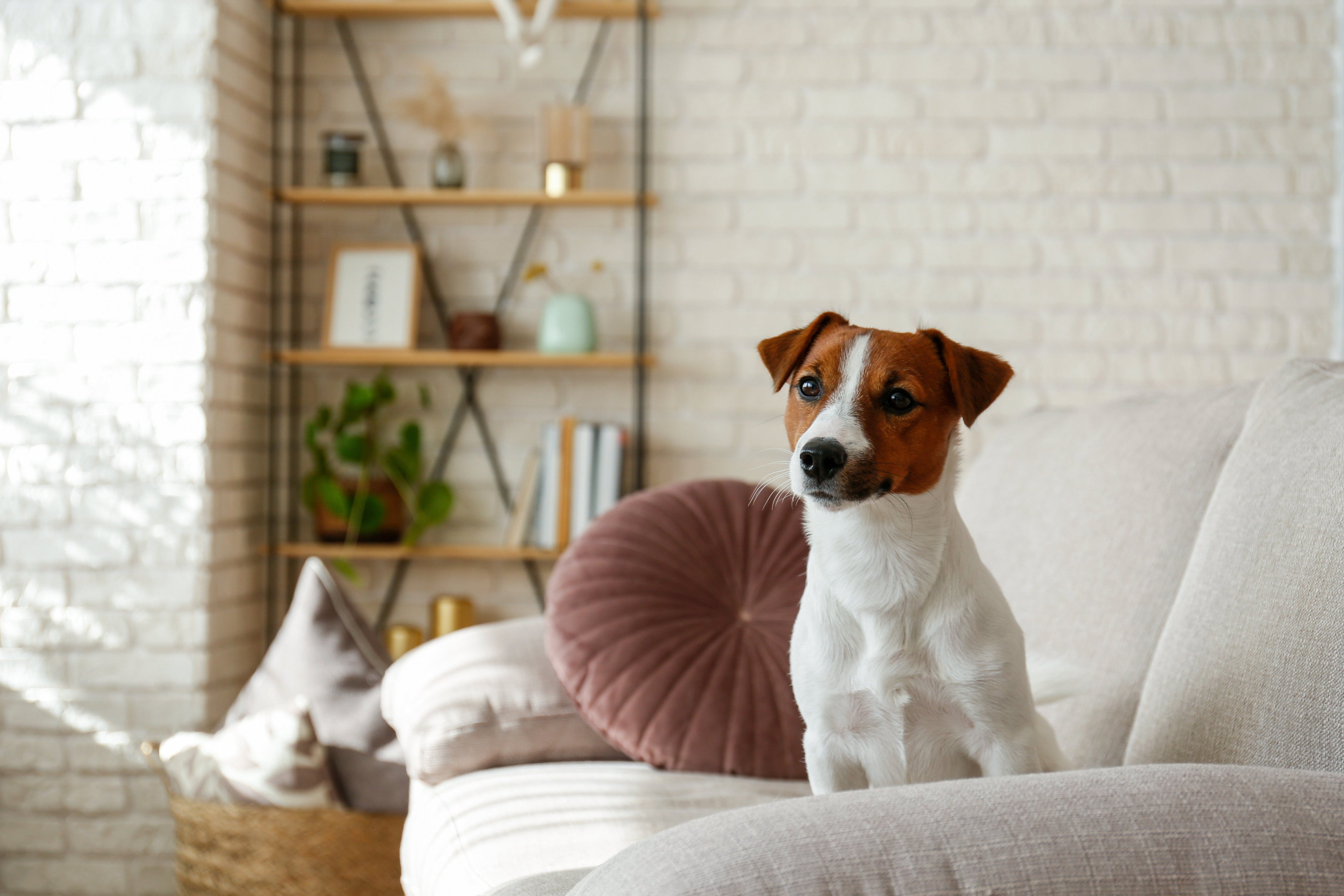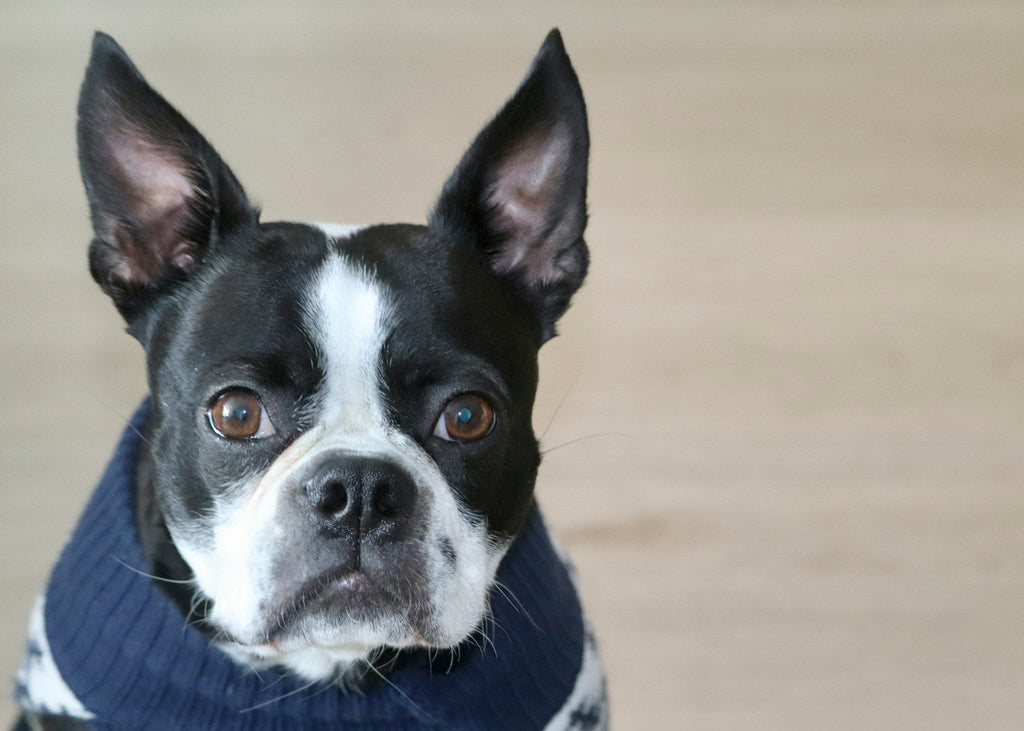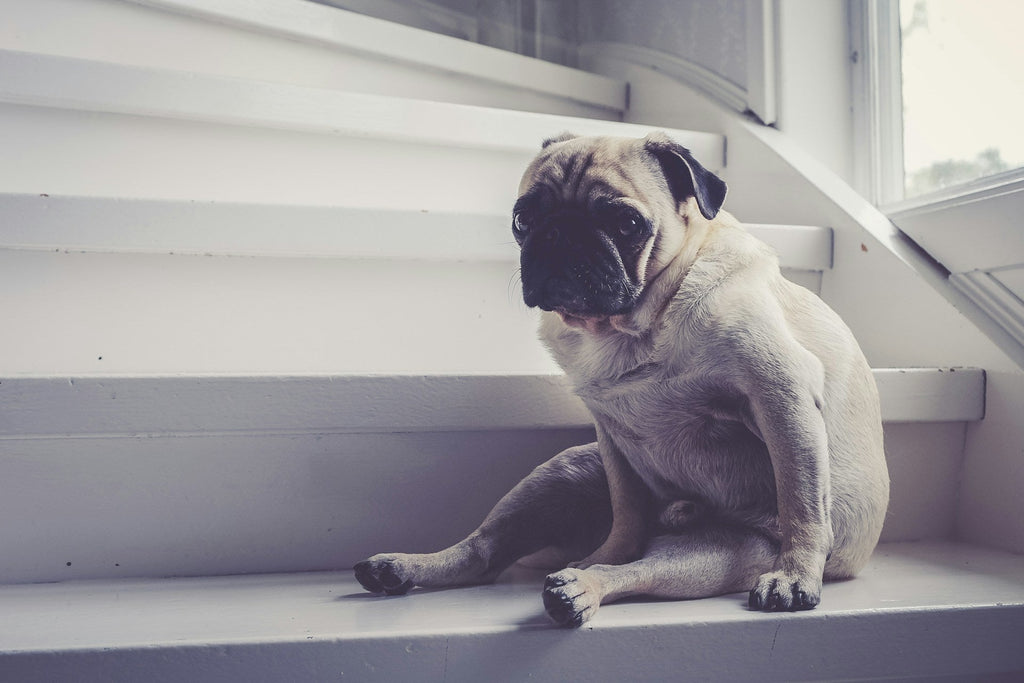Effective Techniques for Potty Training Older Dogs

Potty training an older dog can seem like a daunting task. Especially if you're trying to do it without a crate.
But don't worry, it's not impossible. In fact, with the right techniques, it can be a rewarding experience. Both for you and your furry friend. This guide is here to help you navigate this process.
We'll provide practical tips and effective techniques. All aimed at helping you potty train your older dog without a crate. We understand that every dog is unique. That's why we've included a variety of methods to suit different dogs and situations.
Older dogs can have well-established habits. This can make potty training a bit more challenging. But remember, patience and consistency are key. With these two ingredients, you can help your dog learn new habits.
We'll also discuss the benefits of crate-free training. It can greatly enhance your dog's well-being. Plus, it can strengthen the bond between you and your pet. We'll guide you on how to establish a regular routine for outdoor breaks. And how to use specific verbal commands to encourage your dog. Immediate rewards for desired behaviour will also be covered.
Accidents will happen. It's part of the process. We'll share tips on how to handle them calmly and effectively. We'll also delve into potential medical issues that could affect your dog's ability to hold it in. And how to adapt the training to your dog's personality and past experiences.
This guide is designed for dog owners like you. Those who are adopting older dogs needing retraining. Or those who want to eliminate the use of a crate for potty training. By the end of this guide, you'll have a toolbox full of potty training techniques. All tailored for older dogs and without the use of a crate.
So, are you ready to embark on this potty training journey? Let's dive in and explore effective techniques for potty training older dogs.

How to Potty Train an Older Dog Without a Crate
Potty training an older dog without the use of a crate can be a bit of a challenge, but with the right strategy and mindset, it can be accomplished successfully. It is essential to approach the training with care and understanding, acknowledging that your older dog likely has established habits that they are accustomed to.
One of the first steps you should take is to create a comfortable and inviting outdoor space specifically designed for your dog to feel safe and secure while relieving themselves.
This area should be easily accessible from your home and should also be a place that your dog is familiar with. By ensuring the space is both welcoming and recognizable, you can facilitate a positive association for your dog when it's time for potty breaks.
Moreover, it can be beneficial to use a leash during your dog’s outdoor breaks. This will allow you to gently guide them to the designated potty spot you have chosen.
By doing so, you reinforce the understanding that this is the appropriate place for them to go. This combination of creating a friendly environment and providing gentle guidance can significantly assist your older dog in adapting to this new potty training routine.
With consistency and patience, you can help them transition smoothly and confidently into this process.
Establishing a Routine for Success
One of the first steps in effective potty training is establishing a routine. Dogs thrive on consistency, which helps them understand expectations. Setting a regular schedule can make all the difference.
Begin by taking your dog outside at the same times each day. This could be after meals, after waking up, and before bed. Consistent timing reinforces the routine.
Try to use the same door and spot each time you go out. This familiarity provides a clear signal to your dog. Over time, they will associate this routine with potty time.
Recognizing and Responding to Your Dog's Signals
Pay attention to subtle signs that your dog needs to go out. These can include circling, sniffing, or pacing. Recognizing these signals prevents accidents.
Once you notice a signal, act quickly. Prompt responses reinforce the training process and help your dog learn faster. This ensures that they associate these signals with going outdoors.
Stay calm and attentive. This approach makes it easier for your dog to communicate needs. Moreover, it strengthens your bond, making them more willing to follow your lead.
The Importance of Regular Outdoor Breaks
Regular outdoor breaks are crucial for successful potty training. Older dogs, especially, benefit from frequent opportunities to go outside. It reduces the likelihood of accidents indoors.
Schedule breaks every few hours. Tailor this to your dog's needs and health. More frequent breaks may be needed for some.
These breaks are not just about potty training. They're also a chance for exercise and mental stimulation. Keeping your dog active can improve their overall behaviour and help with training.
Positive Reinforcement: The Key to Learning
Positive reinforcement is an effective method for potty training an older dog. When your dog succeeds, reward them right away. Rewards can include treats, verbal praise, or a favorite toy.
Immediate rewards help your dog make the connection between their actions and the positive feedback. This strengthens their desire to repeat the behaviour. Over time, this builds strong habits.
Consistency in rewarding desirable behaviour is crucial. Don't miss any opportunities to praise your dog's successes. This consistent positive feedback makes learning both faster and more enjoyable for your dog.

Avoiding Negative Reactions to Accidents
When accidents happen, it’s important to remain calm. Reacting negatively can create fear and confusion. Instead, focus on positive reinforcement when things go right.
Avoid scolding or punishing your dog for accidents. This could lead to anxiety and inhibit their learning. Instead, clean up without fuss and redirect them with gentle guidance.
Remember, accidents are part of the learning process. Patience and understanding are vital. Keep focusing on positive strides, as this will lead to faster progress.
Reward-Based Training Techniques
Using reward-based techniques can make potty training engaging for your dog. Begin by identifying what motivates them—treats, affection, or play. Tailor your training to these preferences.
Incorporate rewards immediately after they finish outside. This clear association helps them learn which behaviours you appreciate. Varied rewards can keep their interest and motivation high.
Avoid relying solely on treats for rewards. Mix it up with verbal praise or petting. This ensures your dog values different types of positive feedback, which can be helpful in various situations.
Communication and Cues
Effective communication is the foundation of successful potty training. Clear, consistent commands guide your dog’s understanding. Use simple words like “outside” or “potty” to signal what you expect.
Consistency is crucial when establishing cues. Ensure all family members use the same words. This prevents confusion and helps your dog learn faster.
Pair verbal cues with actions. For instance, say the cue while heading to the door. This creates a direct association, reinforcing the learning process.
Visual Aids and Their Benefits
Visual aids can enhance communication during training. Doorbells or bells at dog height can be practical tools. Teaching your dog to ring them before going out creates clear signals.
These aids empower your dog to communicate needs. They reduce guesswork about when your dog needs to go. Over time, your dog will learn to signal consistently.
Utilizing visual aids offers both clarity and reassurance. Dogs know how to get your attention appropriately. It also helps build their confidence in communicating with you.
Understanding Your Dog's Body Language
Body language provides essential insights into your dog's needs. Watch for signs like sniffing around or pacing. These behaviours often indicate they need to go out.
Learn your dog’s specific signals to anticipate their needs better. Each dog’s cues might slightly differ, so stay observant. This knowledge enables timely responses, reducing the chance of accidents.
Interpreting body language builds a stronger bond. It shows your dog you understand them. This mutual understanding encourages trust, aiding in successful potty training.
Managing and Preventing Accidents
Preventing accidents is key to successful potty training. This requires vigilant supervision and structured routines. Anticipating needs can significantly reduce mishaps.
Limit your dog's access to areas until they are reliably trained. Use gates or closed doors to confine them to spaces where you can watch them. This setup helps you respond quickly to any cues.
Set a consistent schedule for outdoor breaks. Dogs thrive on routine, and regular outings reinforce the habit. Frequent breaks prevent your dog from holding it too long, reducing accidents.
Dealing with Accidents Calmly and Effectively
Accidents happen, but your response can make a difference. Stay calm and avoid scolding your dog. Negative reactions can lead to fear and anxiety, hindering progress.
Instead, gently interrupt the accident if caught in the act, and take your dog outside. Praise them if they finish outside. This helps reinforce where they should go.
Thoroughly clean the affected area with enzymatic cleaners. These products break down the odor, preventing your dog from returning to the spot. This step is crucial in preventing repeat accidents.
Environmental Management Inside the Home
Proper environmental management can prevent many accidents. Clear boundaries help define “safe” areas for your dog. This limits where accidents might occur.
Remove carpets or rugs in areas your dog frequently occupies. Hard floors are easier to clean and prevent odours. This makes accidents less impactful and easier to manage.
Create a designated “restroom” area outside. Consistency in where your dog relieves themselves reinforces proper habits. This designated space becomes familiar and comforting for your dog.

Health Considerations and Special Circumstances
Understanding your dog's health can impact potty training. Some older dogs may face health issues. These can include incontinence, arthritis, or cognitive decline.
Consult a vet if health concerns arise. They can offer guidance tailored to your dog's needs. A proper diagnosis might reveal underlying issues affecting training.
Don't overlook subtle signs of discomfort. Pain or illness can affect your dog's behaviour. By addressing these, you set your dog up for success.
Adjusting Training for Senior Dogs
Senior dogs have unique needs. Patience and gentle handling are crucial. Physical limitations might require short, frequent breaks instead of long walks.
Tailor your approach to your dog's abilities. Soft surfaces can ease arthritic joints. Shorter distances reduce strain and keep sessions positive.
Monitor your dog's response. Adjust routines based on feedback. Adaptation shows your understanding of their changing needs.
Training in Different Weather Conditions
Weather can affect potty training sessions. Rain or cold may deter your dog from going outside. Encourage bravery with positive reinforcement.
Prepare for various weather scenarios. Use a covered outdoor space, if possible. Alternatively, dress your dog appropriately for the weather.
Stay consistent in all conditions. This builds resilience and adaptability in your dog. A routine that remains despite weather challenges reinforces training habits.
Building Trust and Understanding
Trust forms the foundation of effective potty training. Bonding with your older dog is crucial for success. It encourages cooperation and reduces anxiety.
Building a relationship takes time and effort. Engage in activities your dog enjoys. This strengthens the connection and fosters trust.
Understanding your dog's needs is key. Attune to their signals and preferences. This empathetic approach leads to successful training outcomes.
Socialization and Its Impact on Potty Training
Socialization plays a vital role. A well-socialized dog is less anxious. This calmness helps them focus on training tasks.
Expose your dog to various environments. This builds confidence and reduces fear. Familiarity with different places encourages successful potty training.
Positive interactions with others boost socialization. Meet new people and dogs regularly. This enriches your dog's experience and aids training efforts.
The Importance of Patience and Consistency
Patience is essential when training older dogs. Changes don't happen overnight. Persistence leads to long-term results.
Consistency reinforces positive behaviours. Keep routines steady to avoid confusion. This consistency nurtures trust between you and your dog.
Celebrate small victories in the process. Acknowledge progress with encouragement. This positive reinforcement bolsters both your and your dog's morale.
Advanced Potty Training Tips and Tricks
Advanced potty training strategies can elevate results. Consider incorporating new techniques that suit your dog's needs. Adaptation is key to overcoming challenges.
Observe your dog's progress for improvements. Adjust your strategies accordingly. Tailoring your approach ensures effective training.
Stay informed about modern training methods. New insights can provide fresh perspectives. Incorporating these can enhance your dog's learning experience.
Transition Tools: Potty Pads and Outdoor Spots
Potty pads serve as an effective transition tool. They familiarize your dog with designated potty areas indoors. Gradually transition to outdoor spots for ultimate success.
Consistency is crucial during this transition. Use the same spot outdoors for bathroom breaks. Routine reinforces the learning process for your dog.
Be patient with your dog's adjustment. Transitioning from pads to outside may take time. Guide them with positive reinforcement to ease the process.
Involving the Whole Family in the Training Process
Involve all family members in training. Consistent messages from everyone create a unified learning environment. This minimizes confusion for your dog.
Assign specific roles to each person. This ensures each member knows their responsibilities. Collaboration boosts the efficiency of training efforts.
Encourage communication among family members. Share observations and adapt strategies as needed. Teamwork leads to a more successful potty training journey.
Conclusion: Celebrating Progress and Maintaining Good Habits
Recognizing your dog’s achievements is crucial. Celebrate progress with enthusiasm. It reinforces positive behaviour and motivates further improvement.
Maintaining consistency is essential for long-term success. Keep up the routines and commands. This helps solidify the training foundation.
Cherish the bond built during training. Strengthening trust makes the process easier. It fosters a harmonious relationship with your dog.
Maintaining Good Potty Habits Long-Term
Consistency is the cornerstone of lasting good habits. Stick to a regular schedule. It keeps your dog’s routine predictable and manageable.
Be vigilant about any regression signs. Address issues promptly and calmly. Reinforce training techniques as needed to maintain progress.
Adapt the routine as your dog ages. Older dogs may need more frequent breaks. Keeping routines flexible ensures continued success.

When to Seek Professional Help
Sometimes professional guidance is necessary. If progress stalls or challenges persist, consult a trainer. They offer expert insights and solutions.
Health issues can affect potty habits. If you suspect medical problems, visit a vet. Professional input is crucial for your dog’s well-being.
Don’t hesitate to seek help if overwhelmed. Support can make a big difference. Professionals provide tailored strategies for effective training.
For more helpful insights and information, check out our related blog posts here:
How to Toilet Train a Puppy in 7 days




